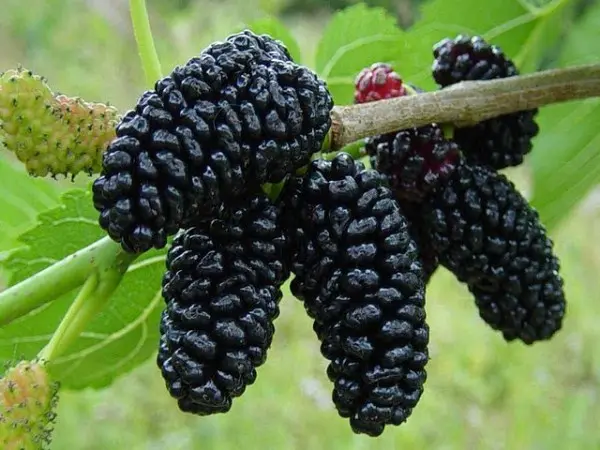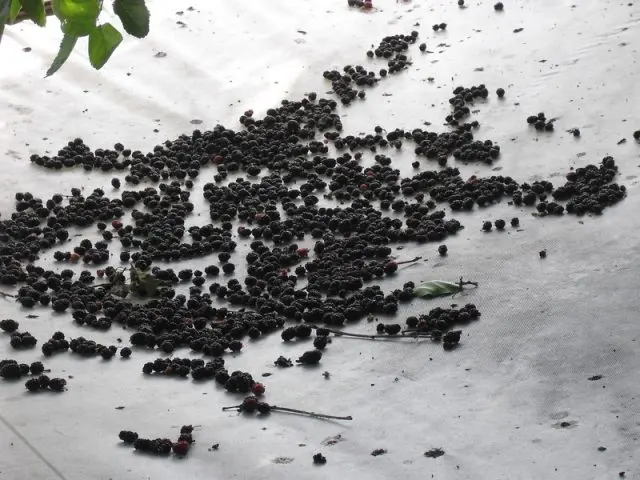Contents
Cuttings of mulberry (also mulberry or mulberry) are not difficult. This is one of the easiest vegetative ways to propagate mulberries, and cuttings can be harvested both in autumn and summer: green cuttings, semi-lignified, lignified. In the spring, mulberry cuttings are combined with grafting. As for ornamental varieties, only propagation by grafting is suitable for them. Regardless of the chosen breeding method, seedlings take root very easily.
Mulberry breeding methods
Mulberry is propagated in almost all available ways:
- layering;
- seeds;
- grafting;
- vaccination.
Most often, the cultivation of mulberry is carried out from cuttings.
In the spring, the mulberry tree is usually propagated by top grafting (copulation) before the sap movement begins in the plants. The most effective is copulation with a germinating eye.
How to propagate mulberry cuttings
Mulberry propagation by green and semi-lignified cuttings, as a rule, does not cause any difficulties. Cuttings with lignified planting material are a little more difficult and longer. In addition, the yield at this dilution is less. If from semi-lignified cuttings that are planted in June, full-fledged seedlings grow by autumn, then it will take at least a year to grow lignified cuttings.
How to propagate mulberry cuttings in autumn
In autumn, mulberry is propagated through lignified cuttings. The process of preparing planting material looks like this:
- In autumn, before the onset of frost on the mulberry tree, a strong lignified shoot is selected from the upper part of the plant.
- Cuttings of 15-18 cm are cut from it.
- The resulting cuts are treated in the lower part with any root formation stimulator (for example, “Kornevin”). Such processing of the lower sections will ensure better rooting of the planting material in the future.
- Then the cuttings are planted on a pre-prepared bed, deeply deepening. No more than 5 cm should remain above the ground.
- Germination of cuttings in this place stretches for 2 years. After that, seedlings with a full-fledged root system can be transplanted.

How to propagate mulberry cuttings in spring
In spring, mulberry propagation by cuttings is combined with grafting on a stock. The preparation of planting material begins in the spring, in mid-March. It is important to have time before the buds begin to bloom.
The breeding procedure looks like this:
- Cuttings of equal length are cut from the mulberry tree.
- The day before grafting, cut cuttings are updated with sections from the underside.
- Then they are placed with renewed ends in clean water at room temperature.
- Choose two cuttings – scion and rootstock. They make an oblique cut and combine the cuttings together. The cuts are firmly fixed with a bandage or plastic wrap. This method is called simple copying.
Mulberry propagation by cuttings in summer
In summer, it is best to propagate mulberries using green cuttings. The procedure for harvesting green cuttings is as follows:
- In June, a healthy shoot is chosen on the mulberry tree, soft enough to the touch (herbaceous). It must be the current year.
- Cuttings are cut from the selected branch so that each cut contains 2-3 buds.
- Each cutting is cleaned – the leaves are removed at the bottom.
- The remaining leaves are cut in half. This is necessary for the further development of the cutting.
- The resulting planting material is planted in a greenhouse to a depth of 3-4 cm.
- During growth, the cuttings are moderately watered, trying not to flood – stagnant moisture is detrimental to mulberries.
- From time to time, the greenhouse is ventilated, and as the planting material grows, this period is increased from several minutes to half an hour.
- A month after planting, the cuttings are fertilized with mineral fertilizers.
- After about 30-35 days, the planting material should form a full-fledged root system.
Breeding mulberry with semi-lignified cuttings is an excellent alternative to green cuttings. In July, the mulberry is already forming strong healthy branches, but they do not have time to lignify by this time. Such shoots are cut in June. Seedling care is similar to growing green cuttings. The only difference is the longer breeding period: the procedure is extended in time by 1,5 months.
Reproduction of mulberry seeds
Compared with the reproduction of mulberry cuttings, the seed breeding method is not so popular. Despite its simplicity, it has one significant drawback – the loss of varietal qualities. Signs of the mother plant when propagated by seeds are not transmitted to the next generation. That is why seedlings grown from seeds are often used as rootstocks for grafting.

The algorithm for growing mulberries from seeds is as follows:
- Ripe mulberry berries are harvested from the branches and put into a container.
- A container with fruits is placed in direct sunlight and kept there until the collected berries begin to ferment.
- With the beginning of the fermentation process, the fruits are crushed and ground in water.
- The raised layer of pulp is drained. Then the berry mass is again filled with water and wiped again until clean seeds remain.
- The resulting planting material is laid out on a tray or plate to dry.
- As soon as the seeds dry, they are removed in a cloth or paper bag until spring. Planting material must be stored in a dry place at room temperature. The kitchen is not suitable for this due to sudden changes in temperature.
- 35-40 days before sowing seeds, they are moistened and placed in the refrigerator, on the top shelf. This is necessary for the stratification of planting material.
- In open ground, seeds are sown in late April – early May. In this case, it is not recommended to bury the planting material too deep – a depth of 1 cm is enough.
- Sprinkle the seeds with earth and water moderately so that the seeds are not washed away.
Tips from experienced gardeners
Conclusion
Mulberry cuttings are usually not difficult even for novice gardeners. This horticultural crop is very easy to propagate – it has a good survival rate, regardless of the breeding method. Mulberry can be propagated by seeds, cuttings, layering, by grafting. Cuttings are the most popular – this method is not only simple, but also allows you to preserve the varietal qualities of a tree, in contrast to the seed propagation method. In order for the plant to take root in a new place, it is enough to strictly observe the basic requirements of agricultural technology.
For more information on how to cut mulberries, you can learn from the video below:









